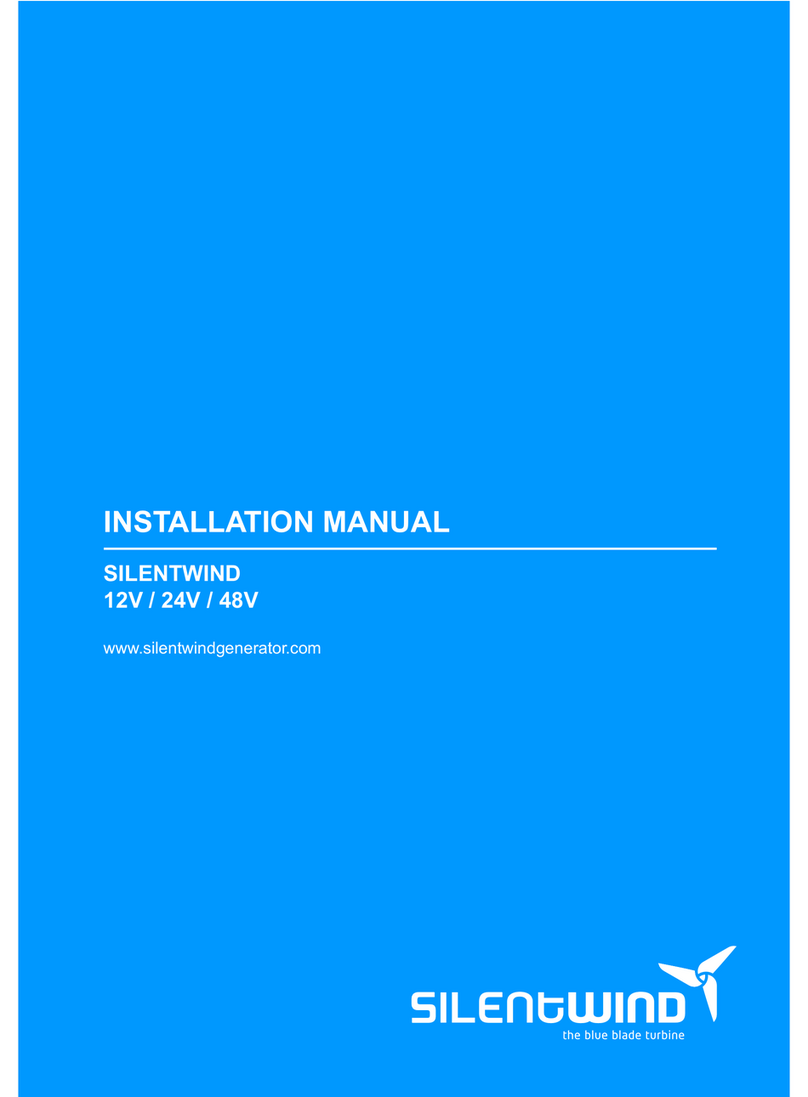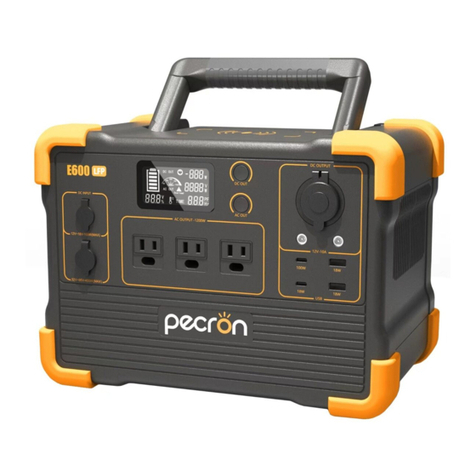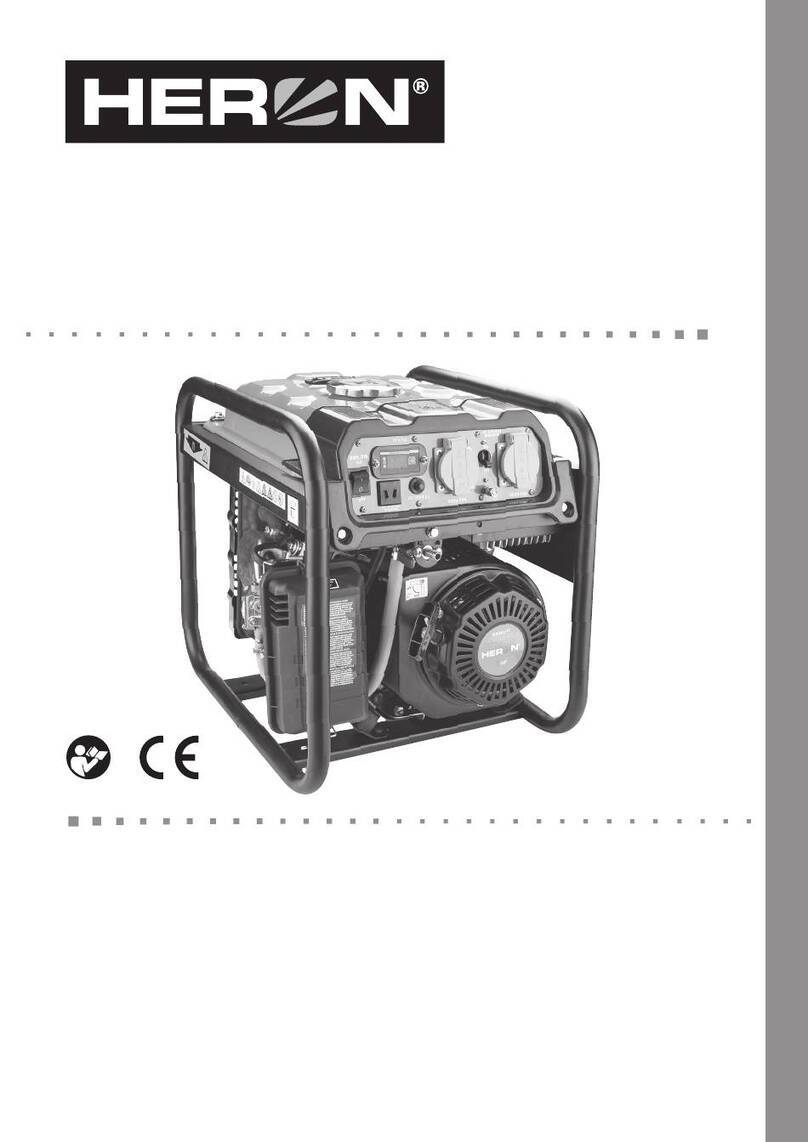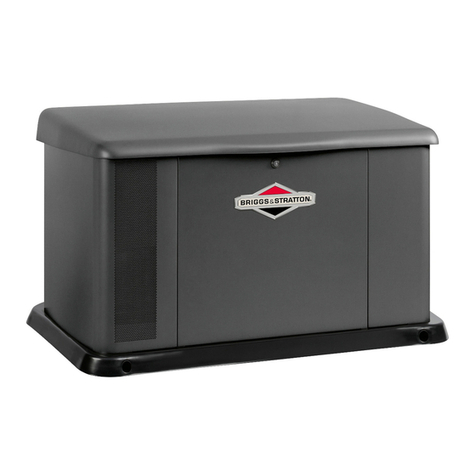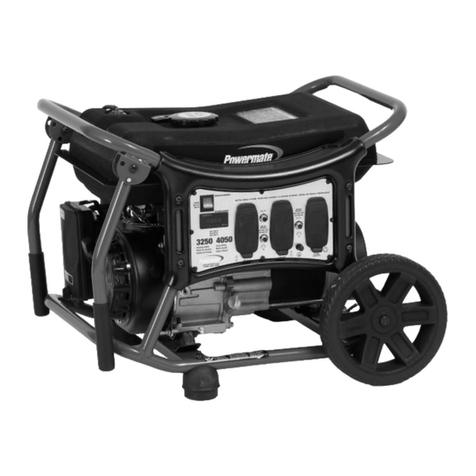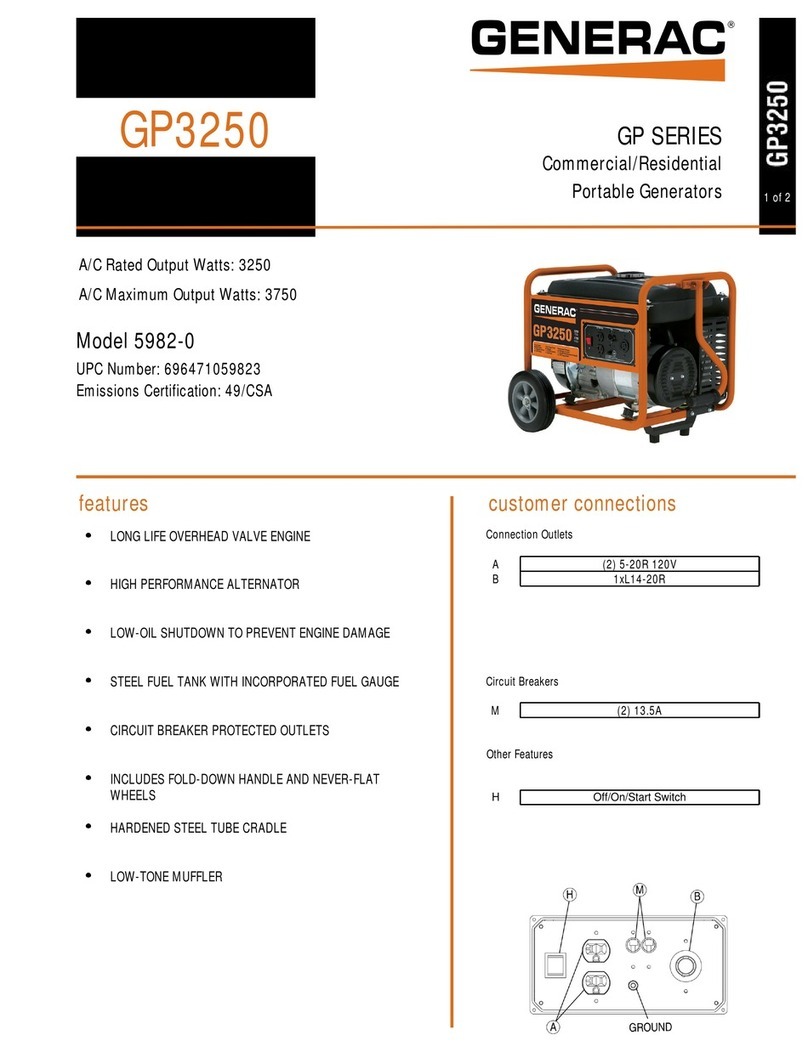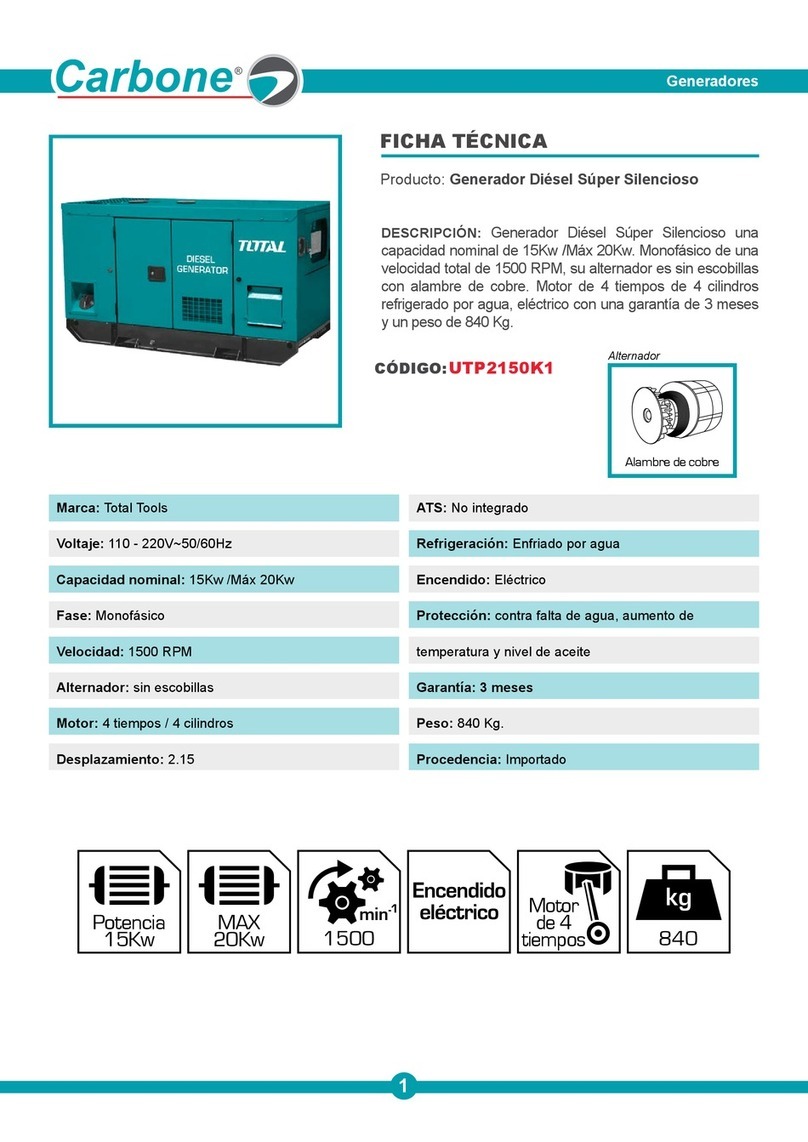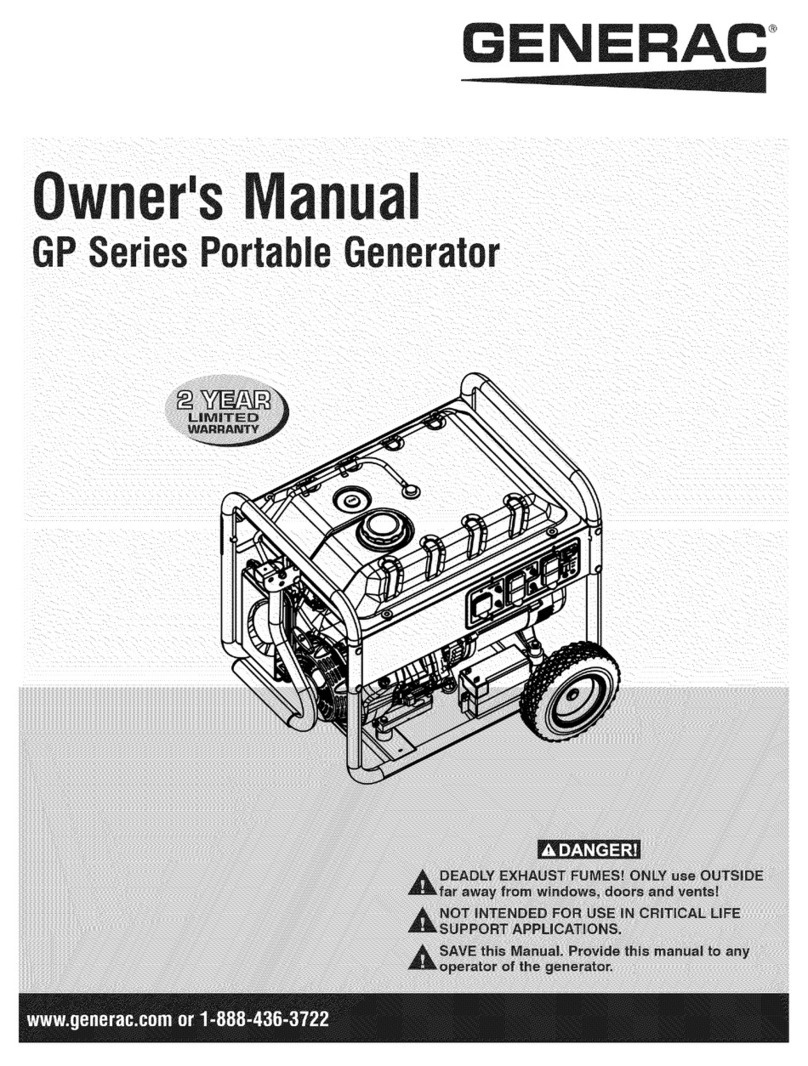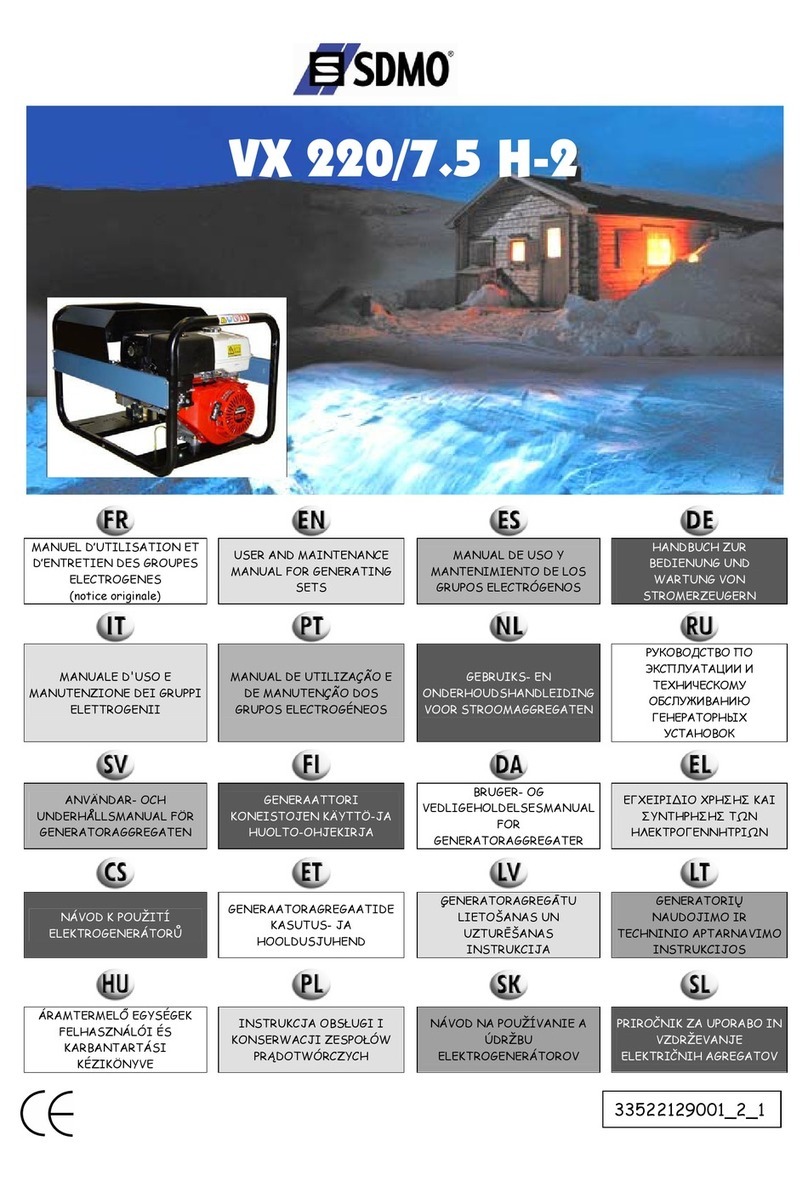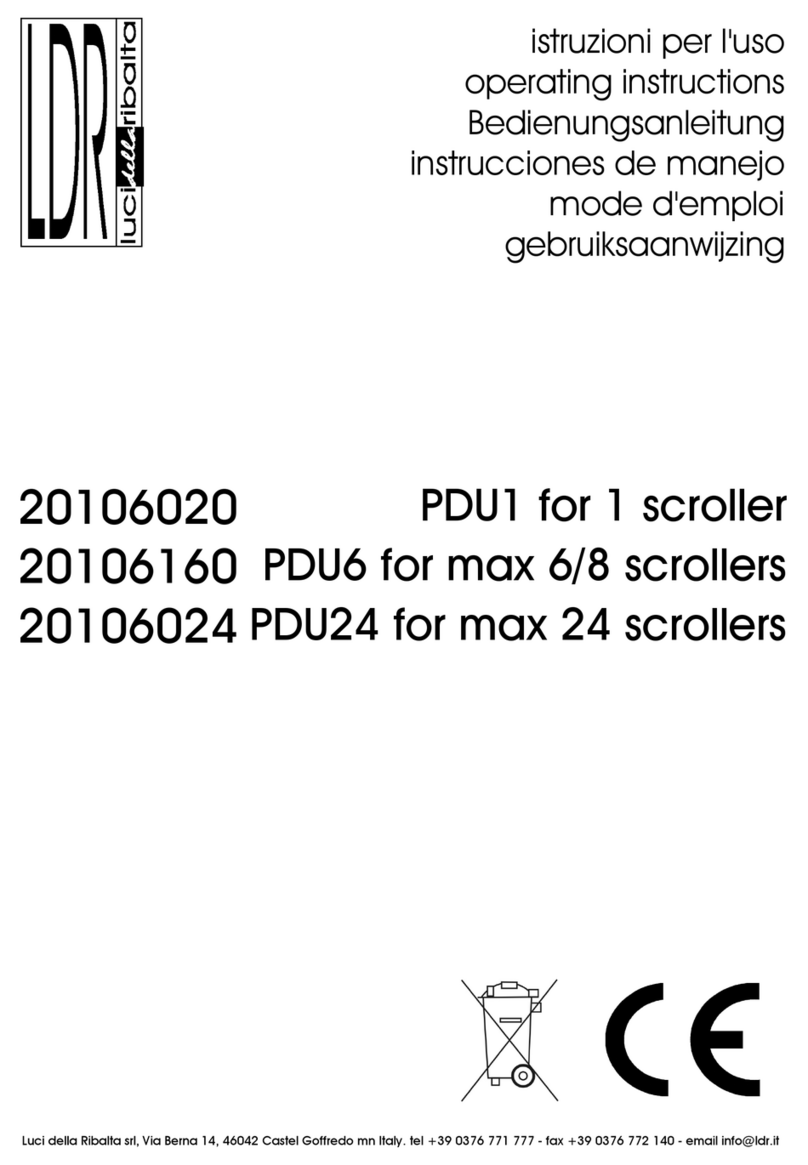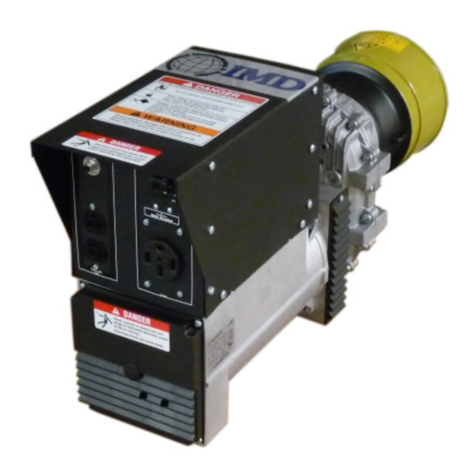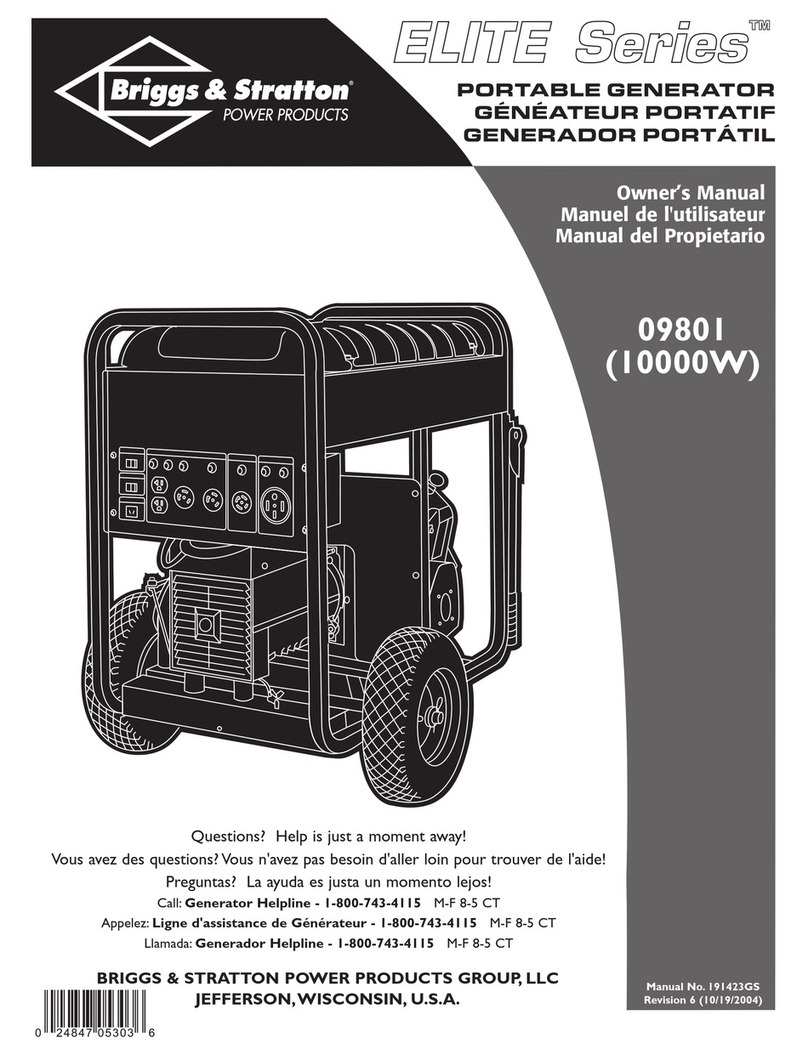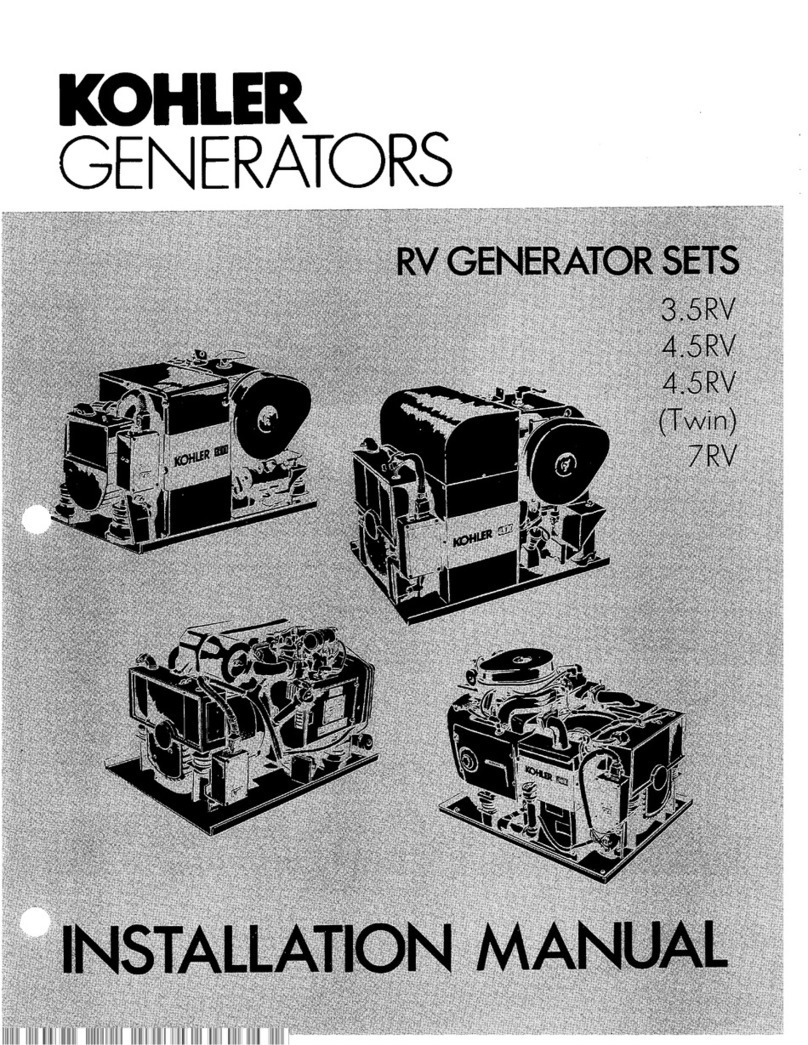SilentWind Pro 12V User manual

SILENTWIND Pro –User Manual
SILENTWIND
12V / 24V /48V
www.SilentWindgenerator.com
March 2019

2
Silentwind Pro –User Manual
March 2019

3
Silentwind Pro –User Manual
March 2019
Index
INDEX ....................................................................................................................................................................3
1. PRECAUTIONS ...............................................................................................................................................6
2. PRESENTATION..............................................................................................................................................7
3. TECHNICAL DATA...........................................................................................................................................8
3.1 SILENTWIND PRO –ELECTRICAL DATA ..........................................................................................................8
3.3 HYBRID BOOST CHARGE CONTROLLER –ELECTRICAL DATA.........................................................................8
3.4 HYBRID BOOST CHARGE CONTROLLER -MECHANICAL DATA.......................................................................8
3.5 POWER CURVE .............................................................................................................................................9
3.6 DIMENSIONS ..............................................................................................................................................10
3.7 PACKAGE CONTENTS..................................................................................................................................11
4. SAFETY PRECAUTIONS .................................................................................................................................12
4.1 MECHANICAL RISCS....................................................................................................................................12
4.2 ELECTRICAL RISKS.......................................................................................................................................12
4.3 INSTALLATION RISKS ..................................................................................................................................13
4.4 WHEN WORKING ON THE SYSTEM .............................................................................................................13
4.5 DISSASEMBLY SEQUENCE...........................................................................................................................13
5. INSTALLATION .............................................................................................................................................14
5.1 RECOMMENDATIONS ................................................................................................................................14
5.1.1 SITE ........................................................................................................................................................14
5.1.2 THE MAST ..............................................................................................................................................15
5.1.3 THE BODY...............................................................................................................................................16
5.1.4 ELECTRICAL INSTALLATION ....................................................................................................................16
5.2 REQUIRED TOOLS AND EQUIPMENT ..........................................................................................................16
5.3 CABLES AND FUSES.....................................................................................................................................17
5.4 MECHANICAL INSTALLATION .....................................................................................................................18
5.4.1 INSTALLATION ON LAND........................................................................................................................18
5.4.2 INSTALLATION ON A VESSEL ..................................................................................................................18
5.4.3 SILENTWIND Pro ASEMBLY ....................................................................................................................20
5.5 ELECTRICAL INSTALLATION ........................................................................................................................22
5.6 CHECK LIST .................................................................................................................................................24
6. OPERATION .................................................................................................................................................25
7. MAINTENANCE ............................................................................................................................................26
7.1 ROTOR BLADES...........................................................................................................................................26
7.2 SCREWS......................................................................................................................................................26
7.3 BEARING AND GASKETS.....................................................................................................................................26
7.4 CORROSION PROTECTION .................................................................................................................................26
7.5 MOUNTING SYSTEM..........................................................................................................................................26
7.6 ELECTRICAL SYSTEM ..........................................................................................................................................26
8. VIDEO LINKS ................................................................................................................................................27
9. FAQ .............................................................................................................................................................27
10. TROUBLESHOTTING.................................................................................................................................29
10.1 SILENTWIND PRO DOES NOT START OR IT’S ROTATING SLOWLY ................................................................29
10.2 BATTERY IS NOT FULLY CHARGED...............................................................................................................30
10.3 SILENTWIND PRO DOES NOT CHARGE.........................................................................................................30
11 WARRANTY .................................................................................................................................................31
11.1 DISCLAIMER OF WARRANTY .......................................................................................................................32
11.2 WARRANTY CARD.......................................................................................................................................33
11.3 AFTER-SALES SERVICE ................................................................................................................................33
12 QUICK INSTALLATION QUICK GUIDE ............................................................................................................34

4
Silentwind Pro –User Manual
March 2019

5
Silentwind Pro –User Manual
March 2019
Congratulation! You have just purchased the new generation of wind generators.
SILENTWIND Pro
SAFE –QUIET –EFFICIENT
SILENTWIND Pro is constructed of the highest quality material and has been thoroughly inspected.
The Warranty Terms are described in a chapter of this manual. For traceability under the warranty, please
register the SILENTWIND Pro on our website: www.silentwindgenerator.com
Registering your SILENTWIND Pro has the following benefits:
-Confirmation of your ownership and safety notifications: by keeping a record of your registration,
we will be able to trace your product and contact you quickly if necessary;
-Product information a new: choose to be among the first to hear about our latest product, helpful
advice or product developments
If you have any questions or comments, do not hesitate contact us:
Rulis Eléctrica Lda
Loteamento Industrial de Linhares, Lote 19
PT-4805-486 Santo Estevão de Briteiros / Guimarães
Portugal
Phone: 00351-253-572763
Fax: 00351-253-572764
E-mail: info@silentwindgenerator.com
Business Hours:
Monday to Friday: from 8h00 to17h00 GMT + 0:00
Welcome to Silentwind family!
The CE marking is a mandatory compliance requirement in EMEA and the UK and although it is self-certified, testing
and evidence to support that testing is preferred from an independent test house.
Machinery Directive 2006/42/EC, Low Voltage Directive 2004/95/EC, Electromagnetic Combability Directive
2004/108/EC. The report and the declaration of conformity are available for inspection on request.

6
Silentwind Pro –User Manual
March 2019
1. PRECAUTIONS
➢Please note this manual is part of the SILENTWIND Pro and must be read carefully.
➢Please study the information thoroughly before starting the installation.
➢This manual should always be kept near the SILENTWIND Pro.
➢Always download the up-to-date manuals. Manuals may change without prior notice.
In this manual, you will see the following icons:
Pay attention. Very important.
High risk. Injury.
Damage to equipment may result if not heeded.
Electrical warning sign.
Major risk, severe injury or dead.
Major risk, severe injury or dead.

7
Silentwind Pro –User Manual
March 2019
2. PRESENTATION
The SILENTWIND Pro features:
Aerodynamic design from aircraft-engineering
Lightweight
Very good start-up performance due to low cogging torque
Low noise
Easy installation
Does not have any inbuilt control electronics, which means that there is hardly any
maintenance work on the generator itself
The Blades are carbon fiber hand laminated, UV-resistant, successfully tested on wind
tunnels at hurricane speed of 122km/h
External Hybrid Boost Charge Controller for wind and solar energy with multi-function display
and integrated electronic stop switch
Durable and low maintenance by external Hybrid Boost Charge Controller and high-quality
components
It is possible to connect several SILENTWIND Pro if your demand is high. As noise emission is very low, you
can operate in residential areas and on vessels without annoying your neighbors.
The SILENTWIND Pro can be used in universal applications on low, middle and high winds:
Any location without an electricity grid connection.
Research units.
Traffic management system.
Emergency systems.
Street lamps.
Billboard illumination.
Project in developing countries.
Wireless LAN access points.
Holiday homes with inverters for independent provision of electricity.
Charge the batteries of an electric vehicle.

8
Silentwind Pro –User Manual
March 2019
3. TECHNICAL DATA
3.1 SILENTWIND Pro –ELECTRICAL DATA
TECHNICAL DATAType of generator
Permanent magnet generator, 3 phases, AC
Rated voltage*
12 VDC / 24 VDC / 48 VDC
Rated power
420 Watt / 450 Watt / 500 Watt
Rated peak power at
14.5 m/s
Start up speed
2 m/s
Start of charging
2.2 m/s
* Your battery set must match the SILENTWIND Pro rated voltage.
3.2 SILENTWIND Pro –MECHANICAL DATA
Safety test in wind tunnel
122km/h without failure
Rotor diameter
1.15 m
Number of blades
3
Weight of blades
150 g / blade
Material of blades
Carbon fiber, hand laminated
RPM range
550 –1700 rpm
Weight
6.8 kg (Generator)
Package dimensions
780 x 400 x 210 mm
Package weight
10 kg
Color
White RAL 9010, powder coated
3.3 MPPT HYBRID BOOST CHARGE CONTROLLER –ELECTRICAL DATA
System voltage*
12 VDC / 24 VDC / 48 VDC
Max. power input wind generator
600 Watt
Max. current input wind generator
40 A / 30 A / 15 A
Max. power input solar
300 Watt
Max. current input solar
20 A / 10 A / 5 A
Max. open circuit voltage input of the solar panel
48 VDC / 48 VDC / 96 VDC
LCD + LED displays
W, A, V/Ah, kWh, Ah
* Maximum voltage adjustable for acid, gel and AGM batteries
3.4 MPPT HYBRID BOOST CHARGE CONTROLLER - MECHANICAL DATA
Weight
2.30 kg
Package dimensions
220 x 150 x 83 mm
Cover protection class
IP52

9
Silentwind Pro –User Manual
March 2019
3.5 POWER CURVE

10
Silentwind Pro –User Manual
March 2019
3.6 DIMENSIONS

11
Silentwind Pro –User Manual
March 2019
3.7 PACKAGE CONTENTS
Please check if all enclosed parts are correct.
Packing List
Item
Description
Quantity
Order number
1
Generator body, powder coated
1
SW501
2
Hub
1
SW105
3
Nose Cone
1
SW101
4
Blades
3
SW103
5
Hybrid Boost Charge Controller
1
SW701
6
Set of screws
1
-
7
Hex Key 4mm
1
SW901
8
Hex Key 5mm
1
SW902
9
Hex Key 8mm
1
SW903
10
Pen drive (*)
1
-
(*) With Instruction Manuals –SILENTWIND Pro
Video Link - Silentwind Package Contents: https://www.youtube.com/watch?v=pLuSNRxI7nE

12
Silentwind Pro –User Manual
March 2019
4. SAFETY PRECAUTIONS
Our primary concern when we have developed the SILENTWIND Pro was your safety. The information
provided is to ensure your safety during mounting, operation, and in case of trouble.
If you have any additional questions, please contact us.
4.1 MECHANICAL RISCS
The blades are produced in carbon fiber and their aerodynamic shape have very sharp edges which
can cause severe injury in high wind conditions. For several reasons, the turning rotor system must
be handled with caution. You cannot see the end of the blades in high wind speeds, so you may not
recognize the inherent danger.
Always keep clear of the turning blades in all circumstances.
Never try to touch the turning rotor system.
Never try to stop the turning rotor system manually.
Blades can break due to ropes or other objects touching them in very strong winds
If one of the blades is damaged, immediately activate the BRAKE function using the stop
switch on Hybrid Boost Charge Controller. If one of the blades is damaged, the rotor system
will be out of balance which may be a risk for the whole mounting construction.
4.2 ELECTRICAL RISKS
A running SILENTWIND Pro can generate a considerable AC voltage and current per phase. High
voltage and current can cause serious injury and fire if you do not pay attention to safety.
Only person with appropriate technical skills and knowledge should carry out
the electrical installation.
Caution is recommended for people with cardiac pacemakers.
Never touch the open end of the wires.
The current when charging the batteries can reach more than 30A.
Careful to never short-circuit the battery.
Always provide enough ventilation for batteries.
To reduce installation problems, keep wire run as short as possible and mount all system
components as close to the batteries as possible.

13
Silentwind Pro –User Manual
March 2019
4.3 INSTALLATION RISKS
Please observe the following precaution during SILENTWIND Pro installation:
Do not install on a windy day.
Only use or build mounting/support system that can handle the load of the SILENTWIND Pro and
the blast pressure of the wind in any condition.
Make sure that nobody is close to the mast.
Before a storm the SILENTWIND Pro should be manually stopped with the stop switch on the
Hybrid Boost Charge Controller and one rotor blade must be fixed to the mast due to the risk of
damage by flying objects.
4.4 WHEN WORKING ON THE SYSTEM
Never work on the system during charging. The current is very high.
Major risk, severe injury or dead. Risk of fire.
Stop the system first by following the below sequence!
4.5 DISSASEMBLY SEQUENCE
1st Brake the wind generator. Tie the blades with a rope if possible.
2nd Disconnect the SILENTWIND Pro . If you have not tied the rope to the blades, to avoid
risks, once you remove the 3 wires from the generator please put at least 2 wires from
the generator together to cause a short circuit and slow down the rotation of the blades.
Use a tape to keep it on short-circuit.
3rd If you are using solar panels, cover them and disconnect them from the charge
controller.
4th Disconnect Battery. This is very important. Otherwise the Hybrid Boost Charge
controller will be damaged.
To assemble to equipment, follow the reverse order.

14
Silentwind Pro –User Manual
March 2019
5. INSTALLATION
Before mounting the SILENTWIND Pro find a suitable position for the wind. The ideal position is when the
wind flows without any obstacles in the surroundings.
Please note that the SILENTWIND Pro can never be fully efficient if it is not mounted in the prevailing wind
direction or distracted by obstructions. Therefore, it is important to find a position without obstructions.
5.1 RECOMMENDATIONS
5.1.1 SITE
Make sure that you install the SILENTWIND Pro in a position where nobody can touch the
blades.
On a vessel, always ensure it is mounted at an enough height above the deck.
Further info on the following chapters.
Electrical assembly illustration

15
Silentwind Pro –User Manual
March 2019
5.1.2 THE MAST
The mast is a separated product and it is considered a third-party component.
On vessels, look for the advice on your vessel manufacturer or on your vessel maintenance company.
On land use, look for advice of a structural engineer.
The mast should be as short as possible but high enough that the blades do not interfere with any
objects and nobody can get hit by the blades. Usually at a height of 3 meters. Make sure that
SILENTWIND Pro gets “clean air”.
The mast must be well secured so that it is safe in strong winds and in adverse sea conditions.
The mast and the mast stays should be assembled in such a way that vibration will be not magnified.
The SILENTWIND Pro is a lightweight equipment but some precautions must be followed.
MINIMUM RECCOMENDED SPECIFICATIONS:
For marine applications, choose preferentially a marine grade stainless steel mast.
Aluminum masts are not recommended. Use aluminum masts only manufactured by certified
mast manufacturers.
The recommended diameters are 48 or 50mm.
The mast profile on steel, must not be less than 1,5mm thickness on 3m high maximum. The mast
must be anchored with rigid rods or steel cables (see the example below).
Use the proper anchorage.

16
Silentwind Pro –User Manual
March 2019
5.1.3 THE BODY
To avoid any damage to the powder coated aluminum housing please touch up any scratches, chipping of
paint work during installation. Sea water will penetrate the scratches and peel off the paint slowly.
As an additional precaution against electrolytic corrosion between dissimilar metals, you can use
“Duralac” or “Tefgel” on the 4 yaw bearing mast bolts/nuts.
5.1.4 ELECTRICAL INSTALLATION
Make sure all wires are placed in the correct position so that damage cannot occur.
The 3 AC cables need to have the same cross section and the correct mm²/AWG.
A damaged cable is a severe safety risk.
Wires with inadequate cross section can cause fire.
Make sure the electrical connections (crimping) are done 100%.
Any voltage drops can influence the control of brake functions.
Use tinned copper cables for marine installations.
When connecting Hybrid Boost Charge Controller to the battery, sparks can occur.
A short circuit is to be avoided.
Always ensure enough ventilation in battery location.
If the Hybrid Boost Charge Controller is not easily accessible, you can use a remote brake switch
connect with the external stop switch to the Hybrid Boost Charge Controller. You can choose the type
of stop switch suitable to your instrument panel.
Connect the mast or support to the ship´s grounding system whenever possible.
Check your battery specifications carefully. Read the battery manual if available.
If you are not qualified to perform electrical installations, don’t do it.
Work safely.
To execute the tasks, use the proper tools.
5.2 REQUIRED TOOLS AND EQUIPMENT
Mast with 48mm to 50mm diameter.
Extension cables to connect the three AC SILENTWIND Pro phases to the Hybrid Boost Charge
Controller.
Connectors for the three-phase cables and crimp plier
Red and black cable to connect the Hybrid Boost Charge Controller to the battery.
Joint connector for battery cable.
Fuse.
Measure tape.
A set of Allen keys is provided to assist with the installation of SILENTWIND Pro.
NOTE: Other tools might be needed. Please plan all steps carefully.

17
Silentwind Pro –User Manual
March 2019
5.3 CABLES AND FUSES
The cross section of the wires required depends on their length and the rated voltage of your system.
Select the location of the mast and measure the distance from the mast top to the battery. Select the
minimum cross section required in the basis of the following tables. The 3 AC cables need to have the
same cross section.
System voltage 12 Volt
Distance from wind generator to the charge controller (m)
0 - 9
10 - 19
20 - 29
30 - 44
45 - 69
70 - 110
Cable cross section mm2- AWG
6 –10
10 –8
16 –6
25 –4
35 –2
50 –1
Distance from the charge controller to the battery (m)
0 –9
10 –19
20 - 29
30 –44
45 - 69
70 - 110
Cable cross section mm2- AWG
16 - 6
24 - 4
35 - 2
-
-
-
System voltage 24 Volt
Distance from wind generator to the charge controller (m)
0 - 9
10 - 19
20 - 29
30 - 44
45 - 69
70 - 110
Cable cross section mm2- AWG
2.5 - 14
4 - 12
6 - 10
10 - 8
16 - 6
25 - 4
Distance from the charge controller to the battery (m)
0 –9
10 –19
20 - 29
30 –44
45 - 69
70 - 110
Cable cross section mm2- AWG
16 - 6
25 - 4
35 - 2
-
-
-
System voltage 48 Volt
Distance from wind generator to the charge controller (m)
0 - 29
30 - 79
80 - 99
100 - 150
Cable cross section mm2- AWG
2.5 - 14
4 - 12
6 - 10
10 - 8
Distance from the charge controller to the battery (m)
0 –29
30 –69
70 - 99
100 - 150
Cable cross section mm2- AWG
4 - 12
4 - 12
10 - 8
16 - 6
For protection against high voltage spikes and/or an accidental short-circuit event, fuses must be installed
in the positive (red) wires close to the battery. The required value of the fuse depends on the rated current
of the SILENTWIND Pro and solar panels connected to the Hybrid Boost Charge Controller. Considering
the maximum value of currents, we recommend:
Silentwind Pro
Max Current (A)
(SILENTWIND Pro + Solar Panel)
Fuse (A)
12V
40 + 20
50 + 25
24V
20 + 10
30 + 15
48V
10 + 5
20 + 10

18
Silentwind Pro –User Manual
March 2019
5.4 MECHANICAL INSTALLATION
5.4.1 INSTALLATION ON LAND
The height depends on the distraction of the wind by surrounding objects. You can simply test this
fixing 3 meters long by 4 cm wide strip of plastic at the top of 4 meters (or longer) pole. You can use
a second strip at 2 meters height.
If the upper plastic strip flows horizontally or up to 30 degrees from the horizontal you have found
the suitable position. In case the plastic strip shows more than 30 degrees from the horizontal or
turns around the mast, the position is unsuitable. This test should be carried out at moderate wind
conditions and must be considered as an additional information only.
We recommend doing several tests for an optimal site assessment. However, you do not need to
do this test if the SILENTWIND Pro is mounted far away from obstructions. You can also get help
from specialists on a small wind generators.
Having found a suitable position, an appropriate mast with suitable hardware must be chosen. The outer
mast diameter must be between 48mm to 50mm and it should be made of stainless steel or aluminum*.
Please also consider possible future maintenance work.
Earthing of the mast is highly recommended. On vessels you can use the central earthing point for mast
and engine. Ask a specialist for advice.
*Please check the aluminum mast maximum load with the manufacturer.
5.4.2 INSTALLATION ON A VESSEL
The assembly height must be chosen in a way that no member of the
crew is endangered by the rotor blades (around 3 meters). The
mechanical fixation of the mast foot must withstand the mechanical
loads occurring specially in rough sea conditions. We recommend
additional rigging to the sea rail or the deck of the ship.
Please consult your vessel manufacturer or your vessel maintenance
partner for advice.

19
Silentwind Pro –User Manual
March 2019
Vessel/motorhomes equipped with wind generators typically have a dedicated mast used as the mounting
post for the wind generator.
Vibrations generated by all wind generators will be transferred down into the vessels hull or the
motorhomes walls via the mast and the fittings. These are called “harmonics”.
Therefore, how the mast is fitted to the deck/motorhomes is one of the most important parts of the
installation.
In order to eliminate harmonics and get best performance out of the SILENTWIND Pro we recommend the
following when installing on a vessel/motorhome:
Do not position SILENTWIND Pro in line with a backstay or centered position on your stern. It
needs to be positioned above the Bimini, coach house or any other construction. To work most
efficiently and with the lowest noise emission all wind generators need “clean air”. During the
wind tunnel testing it was clearly proven that any turbulence will decrease the SILENTWIND Pro
performance. The anemometer on a vessel is usually on a different Hight of the wind generator,
the windspeed shown will not be the same as on the wind generator. Please take this is account.
Avoid attaching the mast on any existing structure; for instance, a frame which holds solar panels,
Biminis, rail fitting, etc.
Use rubber inserts between deck and mast base, rubber washer for screws or bolts to remove any
latent vibrations before entering the hull/motorhome.
Use the supplied rubber insert between the SILENTWIND Pro and the mast.
All brackets, like mast clamps, need rubber strip insertions (3-4mm thickness and of medium
density) between parts.
An upper mast bracket should be installed approximately 20 cm below the lowest part of the
blades tip to stabilize the mast.
Once the mast is mounted you can start the installation of the SILENTWIND Pro.
Video Link –Silentwind Scantrut Mas Assembly:
https://www.youtube.com/watch?time_continue=1&v=0dVJIwbwAWY

20
Silentwind Pro –User Manual
March 2019
5.4.3 SILENTWIND Pro ASEMBLY
1ST - CONNECT THE 3 BLADES TO THE ASSEMBLY HUB WITH THE ENCLOSED SCREWS
The fastening torque is 7-8 Nm equivalent to a
weight of 7-8kg on a 10 cm long lever arm, upright to the
lever arm. If the fastening torque is too high, this will
destroy or damage the blades. If the fastening torque is
not high enough, the blades can get lose. A wrong
fastening torque is a considerable safety risk.
Move each rotor blade in
running direction towards
the edge of the blade guide
of the hub. The running
direction is clockwise
looking from the front.
Before the final tightening of
the blade screws, make sure
that the distance between
the blade tips is the same, in
order to avoid vibrations.
Take a measuring tape and measure the distance from all three tips of the blades and adjust
accordingly (Approximately 990mm ± 5mm tolerance). The blades have been balanced statically
and dynamically.
An incorrect tightening torque represents a significant security risk. Regularly control
the fixation of the blades!
The enclosed nylon discs protect against electrolytic corrosion.
This manual suits for next models
2
Table of contents
Other SilentWind Portable Generator manuals
